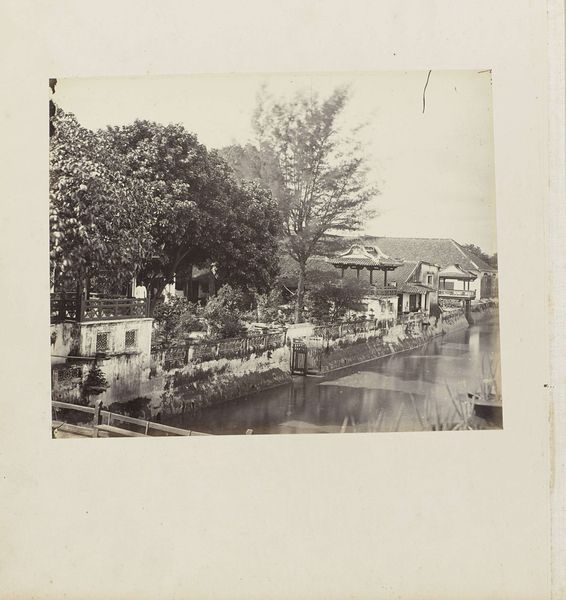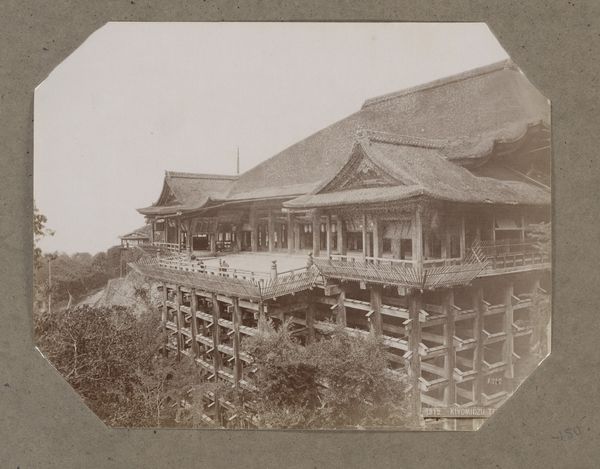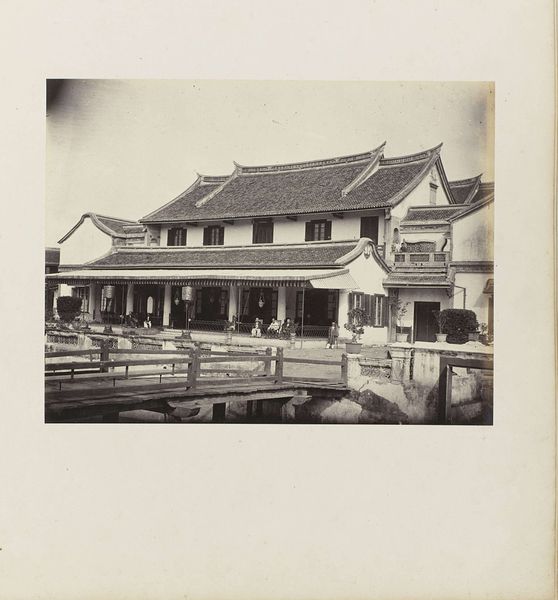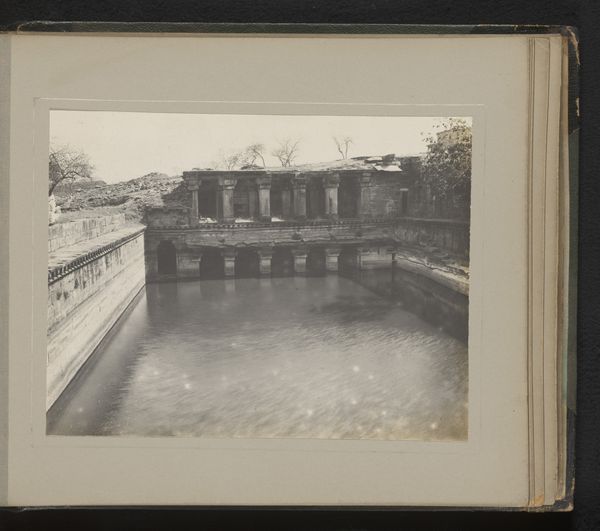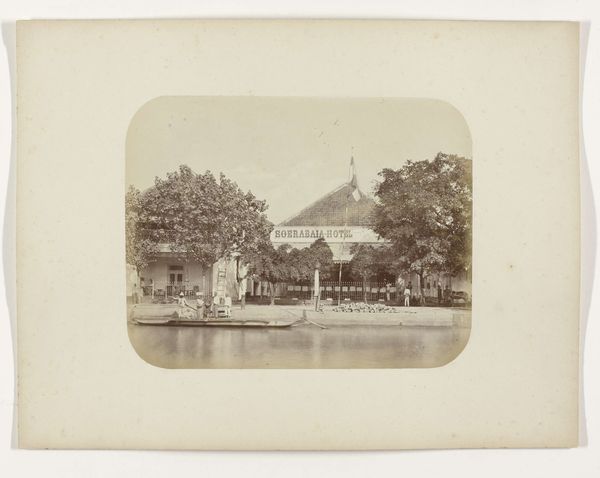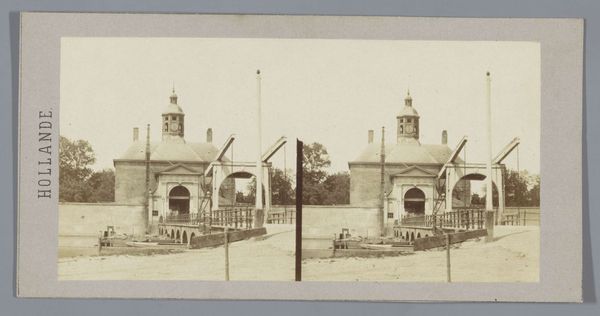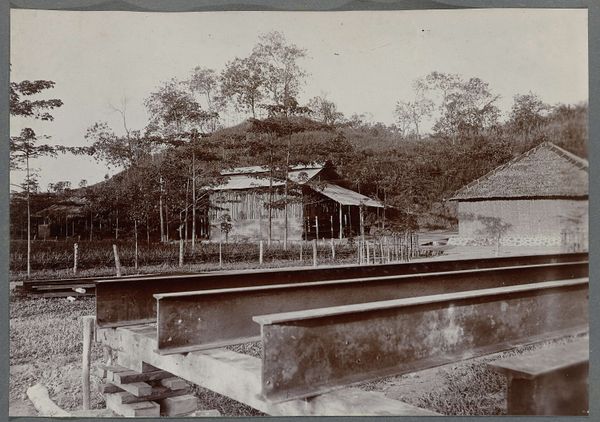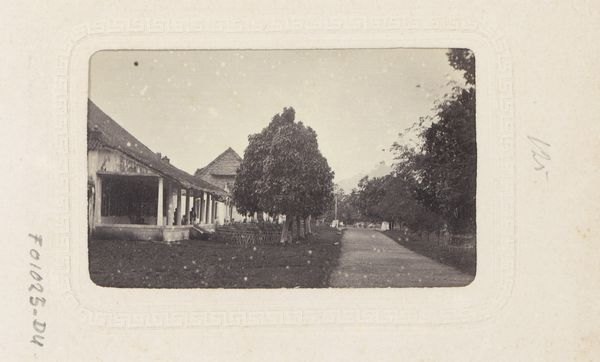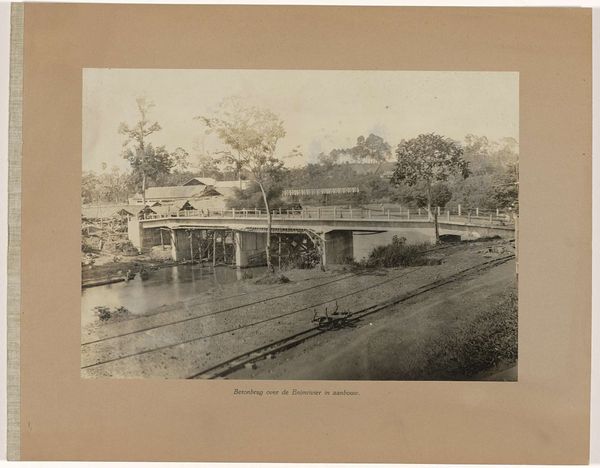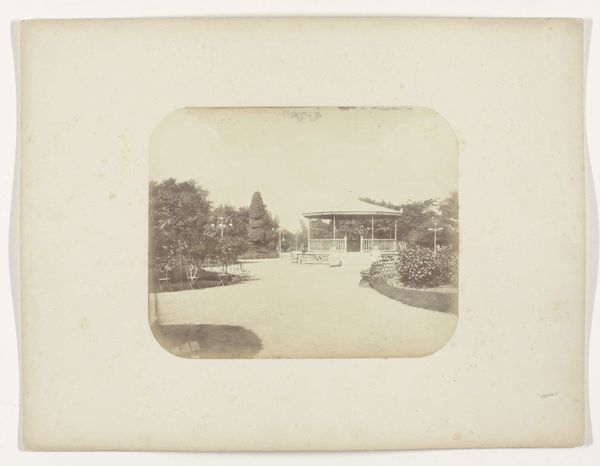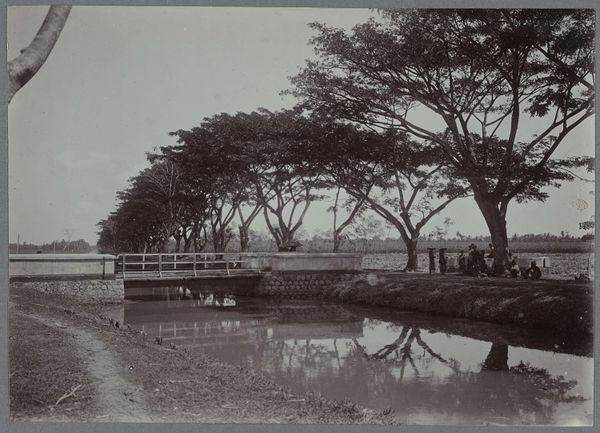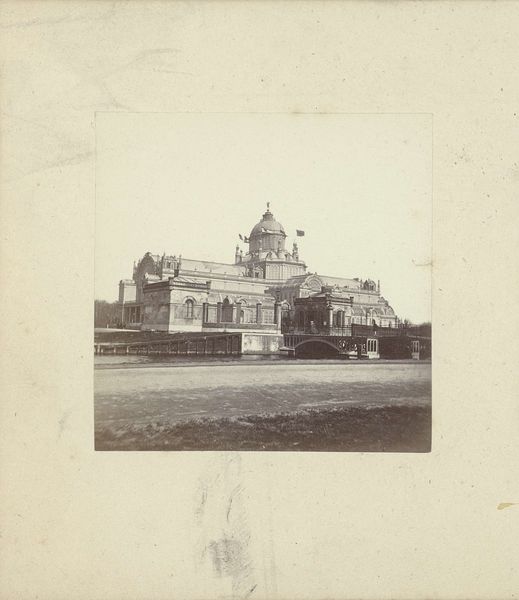
photography, site-specific, gelatin-silver-print
#
landscape
#
photography
#
orientalism
#
site-specific
#
gelatin-silver-print
Dimensions: height 153 mm, width 213 mm
Copyright: Rijks Museum: Open Domain
Editor: Here we have C. Dietrich’s gelatin silver print, “Toegang tot het fort van Ambon,” taken sometime between 1875 and 1890. The stillness of the water and muted tones create a somewhat melancholic feeling. What catches your eye in this image? Curator: Immediately, I see the staging and control inherent in this orientalist landscape. Dietrich presents this fortress in Ambon through a lens that likely appealed to a European audience. The very act of photographing the entrance, controlling access, speaks to the power dynamics of colonialism. What do you make of the presence of a lone figure at the gate? Editor: Good question! The figure seems quite small and insignificant, almost swallowed by the architecture. Perhaps suggesting a sense of limited agency, a silent witness… Curator: Exactly. It’s crucial to consider how photographs like these served to document, but also to justify, colonial presence. Note how the architecture of the fort, a symbol of Western power, is prominently displayed, reflected serenely in the water, which suggests order. The bridge and carefully trimmed shrubbery enhance this idea of curated control. Does this strike you as an objective portrayal, or something more deliberately constructed? Editor: Definitely constructed. I see it now; it’s not just a picture, it's making a statement. What’s truly eye-opening is realizing how photography itself could be a tool for reinforcing social and political narratives. Curator: Precisely. Studying this work reveals a loaded exchange between image, power and perception in the context of colonialism. Editor: I never thought of a landscape photograph having such a layered history.
Comments
No comments
Be the first to comment and join the conversation on the ultimate creative platform.
